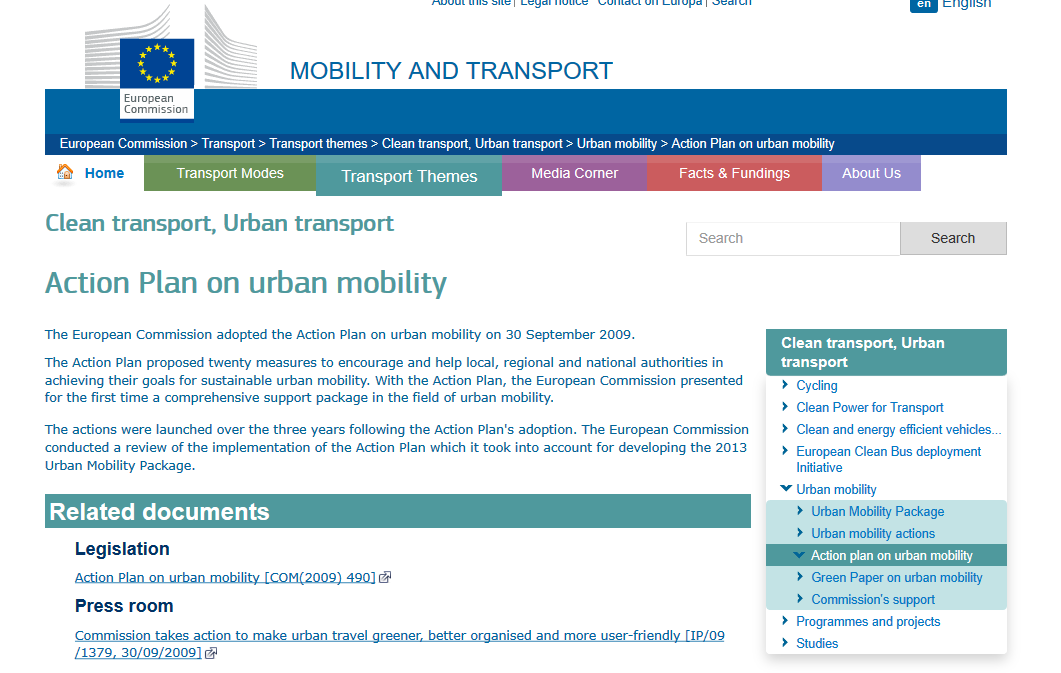Through its various policies and funding of projects, the European Commission has been taking action for a number of years to deliver cleaner and better urban transport. With over 60% of EU citizens living in urban areas of over 10,000 inhabitants, urban mobility has become a topic of utmost importance.
The European Commission's Directorate-General for Mobility and Transport (DG MOVE) has been funding the CIVITAS Initiative since 2002, with CIVITAS 2020 marking its fifth phase.
The 2009 Action Plan on Urban Mobility represented a major step forward in this area, and its implementation is helping to create more efficient and sustainable urban transport systems. The European Commission’s guiding document on transport from 2011, the White Paper on Transport, highlights the importance of the urban dimension.
Among other actions is the target to phase out the use of conventionally-fuelled vehicles in cities by 2050. In addition, after the 2011 Transport White Paper, the European Commission came up with an Urban Mobility Package in 2013 that addresses different initiatives.
The CIVITAS Initiative is a key component of the EC's urban mobility agenda. Within the CIVITAS network, policy priorities in urban mobility are delivered through the Political Advisory Committee (PAC).
For further information on the EU policy on urban mobility, visit the European Commission website.

Zdroj: http://civitas.eu/eu-context